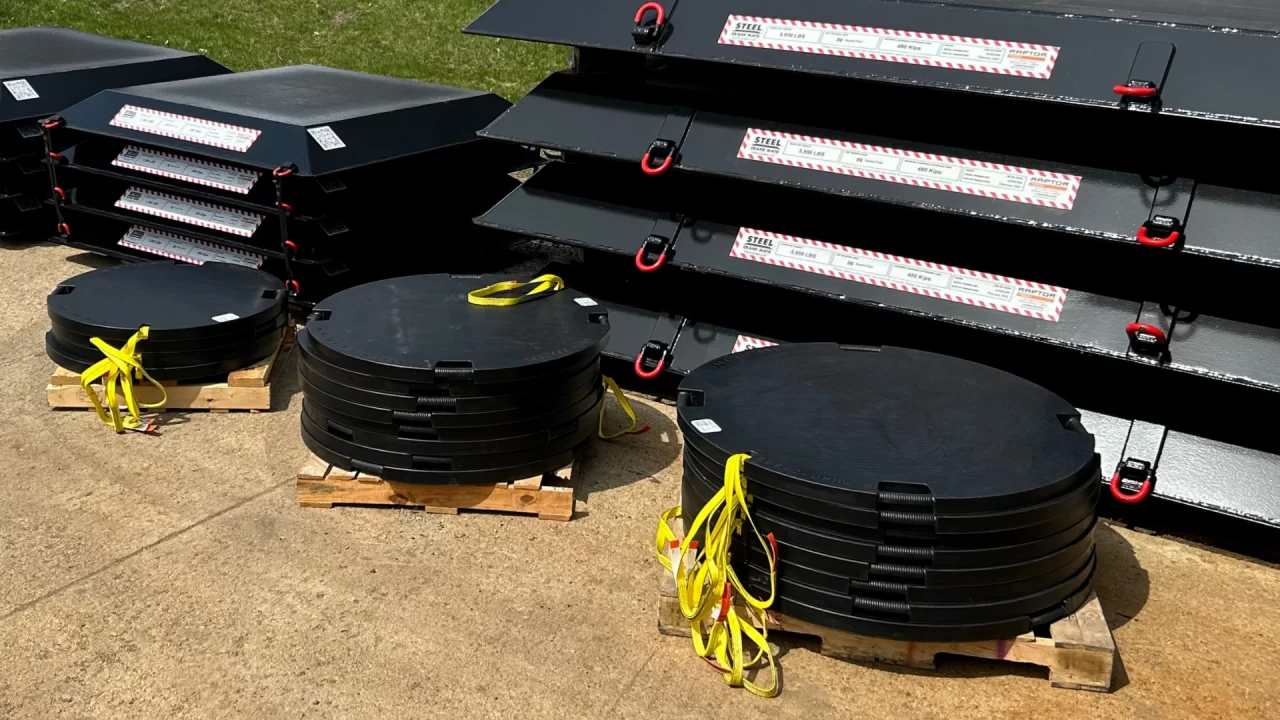Understanding the Revised NIOSH Lifting Equation & It’s Relation to Outrigger Pads
We are breaking down what the NIOSH Lifting Index and Revised NIOSH Lifting Equations are and why it is important to consider them when choosing outrigger pads.
What is the NIOSH Lifting Index (LI)?
The Lifting Index (LI) assists you in having a safer work environment. It’s calculated by dividing the actual weight you lift by the Recommended Weight Limit (RWL).
- If the LI is 1.0 or less, the lift is considered safe and within acceptable limits.
- If the LI is over 1.0, there’s an increased risk of injury, especially to your lower back.
Lifting Index Example:
If the safe limit for a lift is 50 lbs. (RWL), and you’re lifting 75 lbs.:
- LI = 75 ÷ 50 = 1.5 → This means higher risk.
For a safer and more efficient lift, use our lifting lanyard to reduce strain and minimize the need for additional help or equipment.
Understanding Safe Lifting with the Revised NIOSH Lifting Equation (RNLE)
When moving outrigger pads, repetitive lifting by hand can lead to musculoskeletal injuries. The Revised NIOSH Lifting Equation (RNLE) is a safety tool that determines how much weight a person can safely lift to reduce the risk of injuries.
Our lifting lanyard lowers your RNLE by eliminating ground-level lifts. It allows you to lift from approximately 20 inches high and features an ergonomic handle for safer, more efficient handling.

Why RNLE Matters for the Ground Crew
Ground crews often lift large, heavy components by hand. Repetitive lifting can cause long-term musculoskeletal injuries. The RNLE identifies unsafe lifting methods or indicates when a lift may be too risky without assistance.
How the RNLE Helps
Utilizing the Revised NIOSH Lifting equation helps your company and crews in the following ways:
- Shows safe weight limits for lifting
- Helps identify high-risk tasks before they cause injuries
- Supports decisions about when to use the lifting lanyard
- Increases awareness of how lifting affects your body
- Allows your team to identify lifting hazards, enabling safety teams to implement solutions, like our lanyard, for a safer workplace
Implementing the RNLE on your job site supports a safer, more productive workforce by reducing injury risk and promoting long-term operational efficiency.
Employer Advantages to Using RNLE
Muscle strains are common in labor-intensive jobs like moving outrigger pads, and they can cost employers time and money. Globally, musculoskeletal disorder is the single largest cause of work-related illness, accounting for over 33% of all newly reported occupational injuries in the general population.
Using the Lifting Index helps identify risky lifts before they lead to injuries. Fewer injuries mean:
- A safer, more reliable crew
- Better morale and job satisfaction
- Less downtime and lost productivity
- Lower workers’ comp and less time-loss
Investing in safe lifting practices protects both your team and your bottom line.

